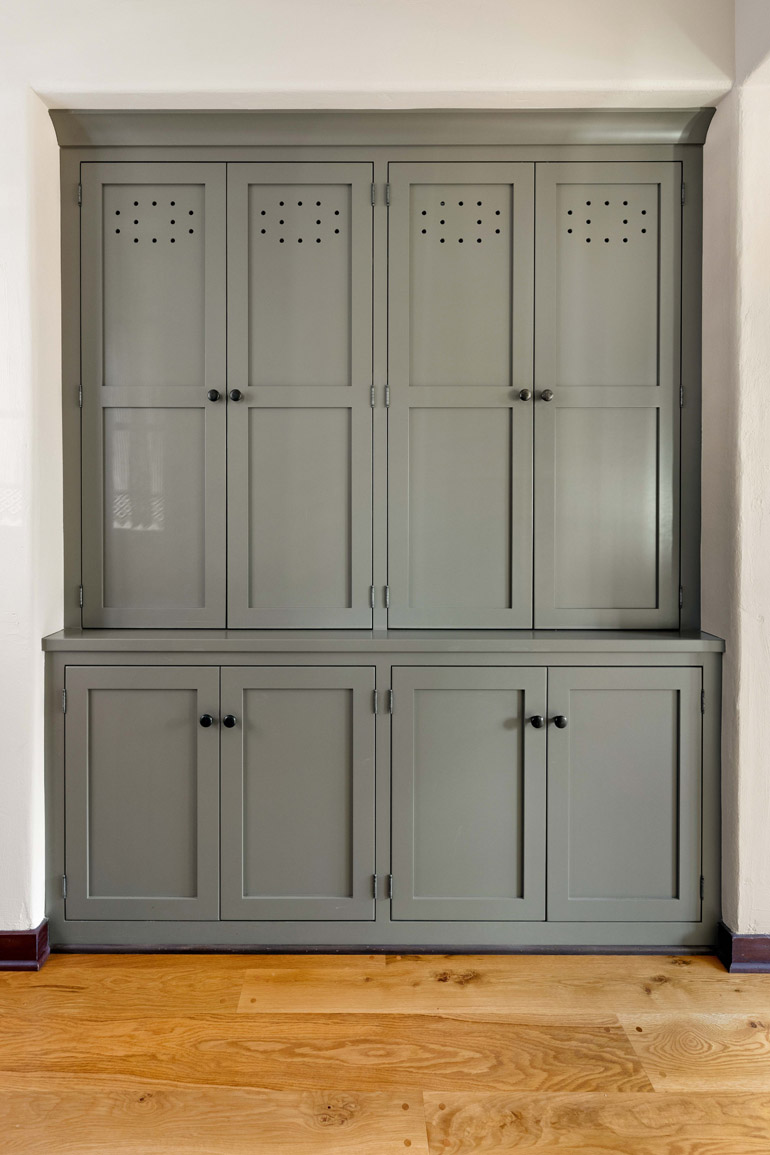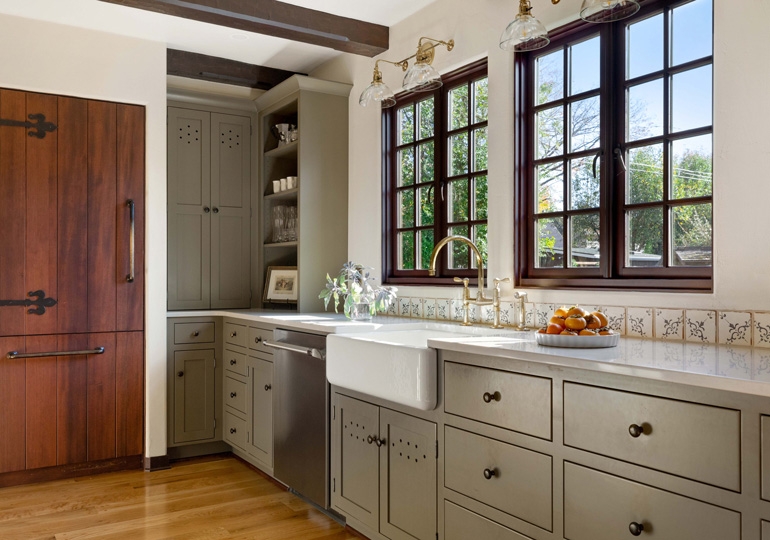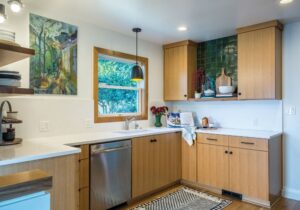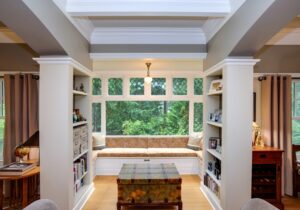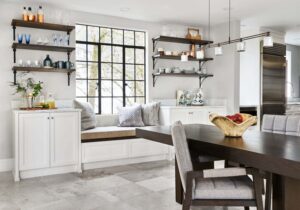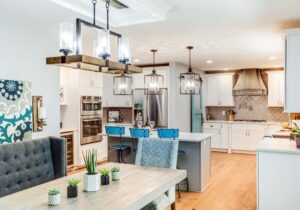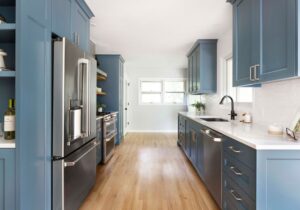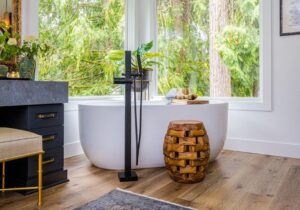Kitchen remodel is a harmonious refrain on original composition.
Photography: Amy Dill / The Vine Studios
Not many historic homes in Oregon can lay claim to having played a role in the area’s music culture like the Casa Musica in Corvallis. The distinctive Tudor — designed for then OAC (Oregon Agricultural College) Music Department head Paul Petri and his wife, fellow musician Lilian, in 1927 by California architect C.A. Heilman — played host to many intimate musical performances during the Petris’ lifetimes. Recently, the home has gotten a lively and authentic remodel to update its kitchen to be more in tune with the rest of the home.
“The kitchen at Casa Musica was not only incongruous with the rest of the home, it also didn’t function well for a busy family of five that enjoys cooking together,” explains Deb Kadas, interior designer and owner of Deb Kadas Interior Design Studio. “It was like a time capsule but to the wrong era.”
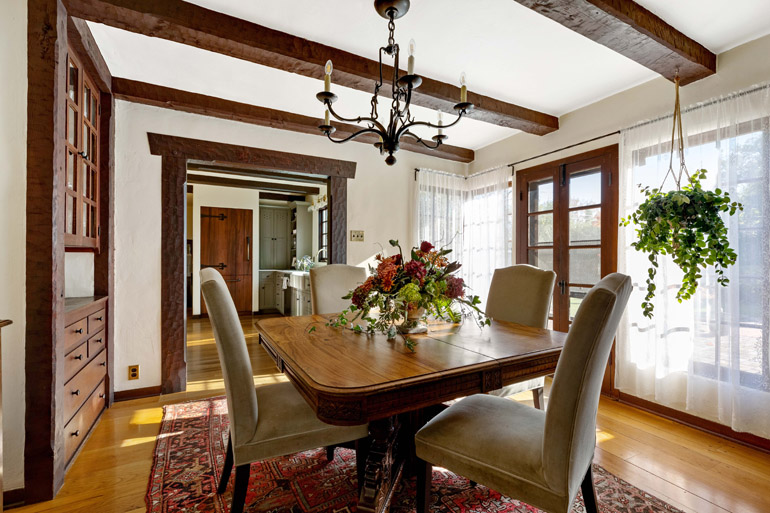
Kadas, who specializes in renovating historic properties, approaches each remodel as a detective and a philosopher, uncovering clues to the original intentions behind a home’s design and decorative features before blending them with the desires and aspirations of the current residents. By understanding the original architect’s intentions and looking for repeated patterns and materials, Kadas honors the historic integrity of the home even while adjusting it to meet contemporary uses.
Kadas spends considerable time contemplating how to support modern life in a historic space. The right floor plan is the foundational building block for a renovation that works for both the home and the family. “I have a favorite quote from designer Jessica Helgerson,” says Kadas. “You can’t decorate your way out of bad architecture.”
Casa Musica, last renovated in the 1980s, wasn’t designed for the modern concept of a family kitchen. In its original form, the kitchen was built to conceal the behind-the-scenes workings of live-in maids and kitchen staff.
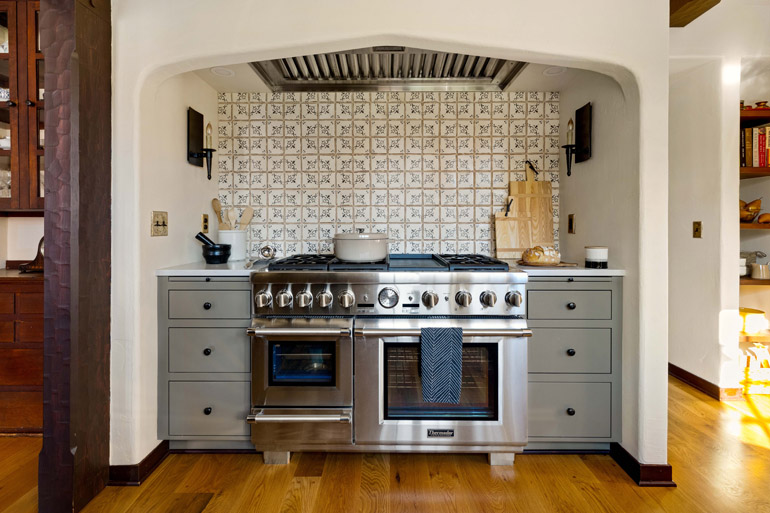
To bring the kitchen into the present while honoring the past, Kadas looked beyond the previous remodel to original decorative details remaining throughout the home. She repeated cabinet patterns, added a period Moorish arch to the new cookstove alcove, and continued hand-hewn posts and beams into the kitchen space.
“When working on historic homes, I try to retain original features when possible, but I’m not a slave to them,” says Kadas.
For example: Preserving the kitchen’s original casement windows didn’t make sense — they were too small and left the space bereft of natural light. But the new, larger windows are historically accurate down to the rolled plaster jambs.
“Whenever possible, I reuse or repurpose unique and valuable features. Otherwise, I match original materials and techniques to remain faithful to the architecture,” says Kadas.
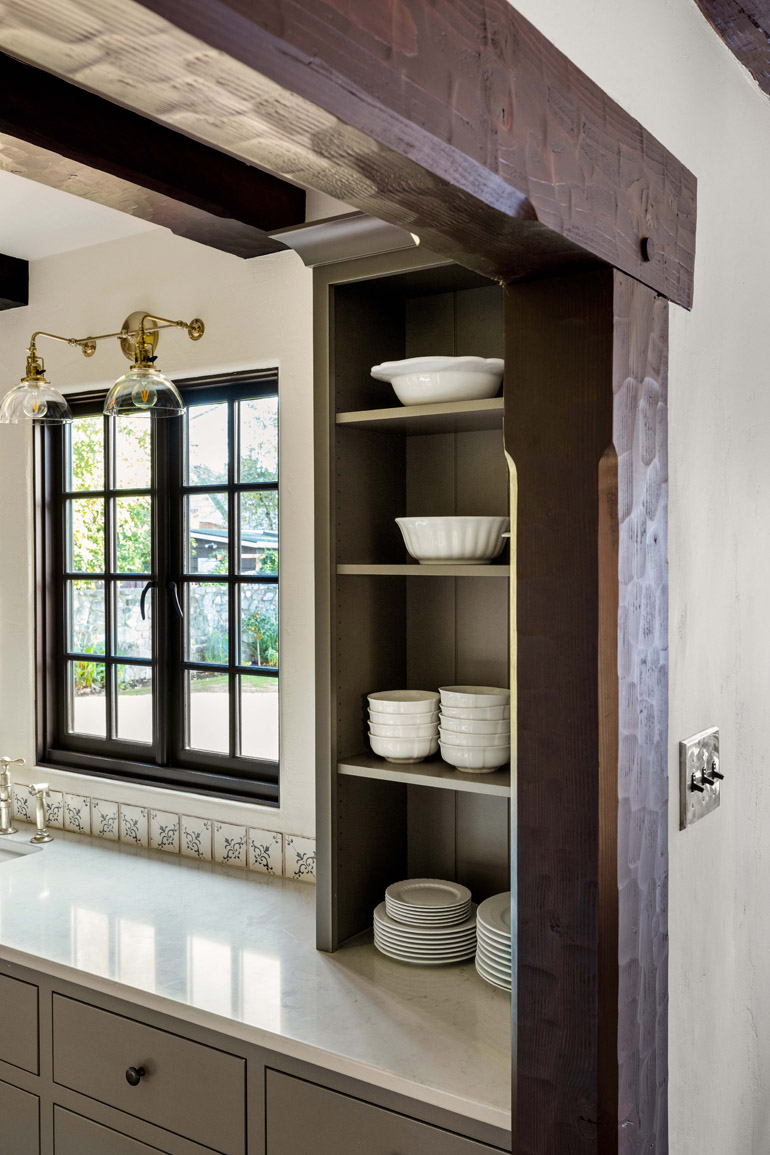
The finishes she chose for the home reflect a deep commitment to authenticity, since most materials were sourced locally when the original homes were built. For Casa Musica, this meant pegged oak floors, fir posts and beams, and hand-painted clay tile reflective of the home and locale.
“My work honors and respects the history of the home but doesn’t turn it into a museum,” says Kadas. “I feel strongly that my role is to be a good steward of the property, facilitating its evolution in a thoughtful way that retains historical significance, but also keeps it relevant for years to come.”
